Algeria is loaded with numerous UNESCO World Heritage structures and villages. One such village which got a mention in the heritage list is the Djémila Village. The Roman settlement, once known by the Berber name Cuicul and now known as Djemila. It features some of North Africa’s best-preserved Berbero-Roman ruins. It is located near the Petite Kabylie and Constantinos. This UNESCO heritage site is topping the list of archaeological lovers travel bucket list.
The site is 900 metres above sea level and situated on a rocky spur between two wadis. So travellers can get a splendid mountainous backdrop too. Hence for nature lovers and history buffs this amazing Roman village, is an offbeat yet exceptional spot to uncover in Algeria.
Let’s explore this Algerian Heritage Site in brief with indiaimagine.
History of Djemila
Let’s begin with where it has all started during the reign of Caracalla in the 3rd century. Since the middle of the 3rd century CE, it has been home to a Christian community. The Roman emperor Nerva established a colony in a mountainous territory 80 km west of Constantine. Following the fall of the Roman Empire in the 5th and 6th centuries, the city was gradually abandoned.
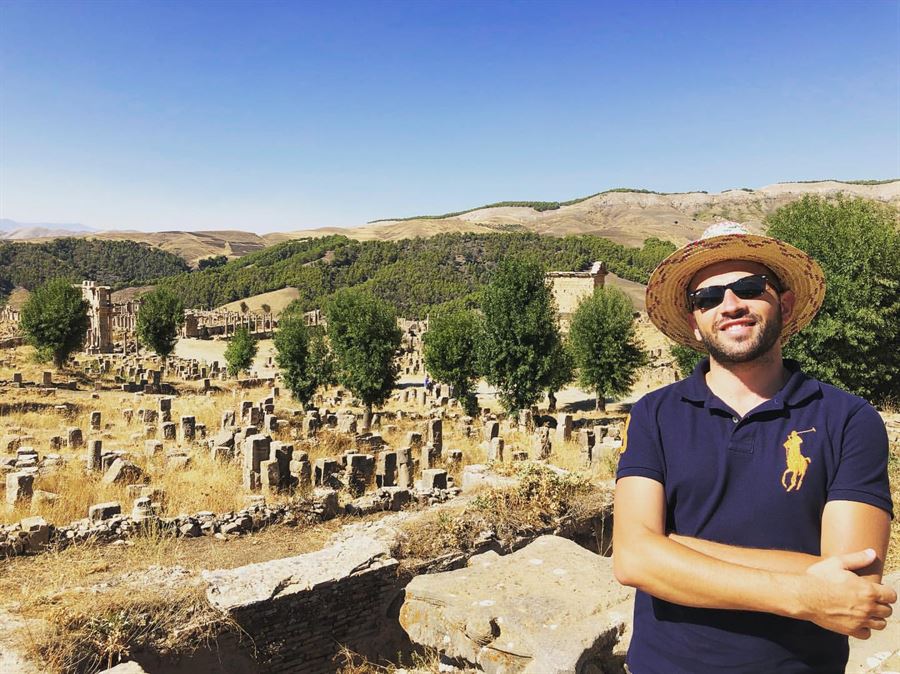
Cuicul’s administrators demolished portions of the existing ramparts to make way for a new theatre. The Muslims eventually took control of the territory, but they did not take back Cuicul, which they called Djemila. The first immigrants were Roman soldiers, who were followed by families from Carthage and other African cities. And later UNESCO has classified these ruins as a World Heritage Site.
When Site Was Discovered?
Between 1909 and 1957, the site was unearthed, but there is still a lot of excavation and conservation work to be done. A Christian Quarter with two basilicas, a chapel and a baptistery has been discovered and little evidence of the ordinary municipal structures was found at the time of excavation. Its most notable feature, however, is its location and integration of its splendid buildings into the mountainous landscape. When you visit there you will notice this thing.
Also Read: Top Tourist Attractions At Abu Mena – Egypt’s UNSECO HERITAGE SITE
Design Description of Djemila
As we mentioned above excavation process discovered much hidden buildings but later there are also few buildings other notable structures are also found. You can currently see theatre, two forums, temples, basilicas, arched windows, pavements and broken houses. The ruins are organised around the forum of the Harsh, a wide paved plaza with a beautiful arch at its entrance.
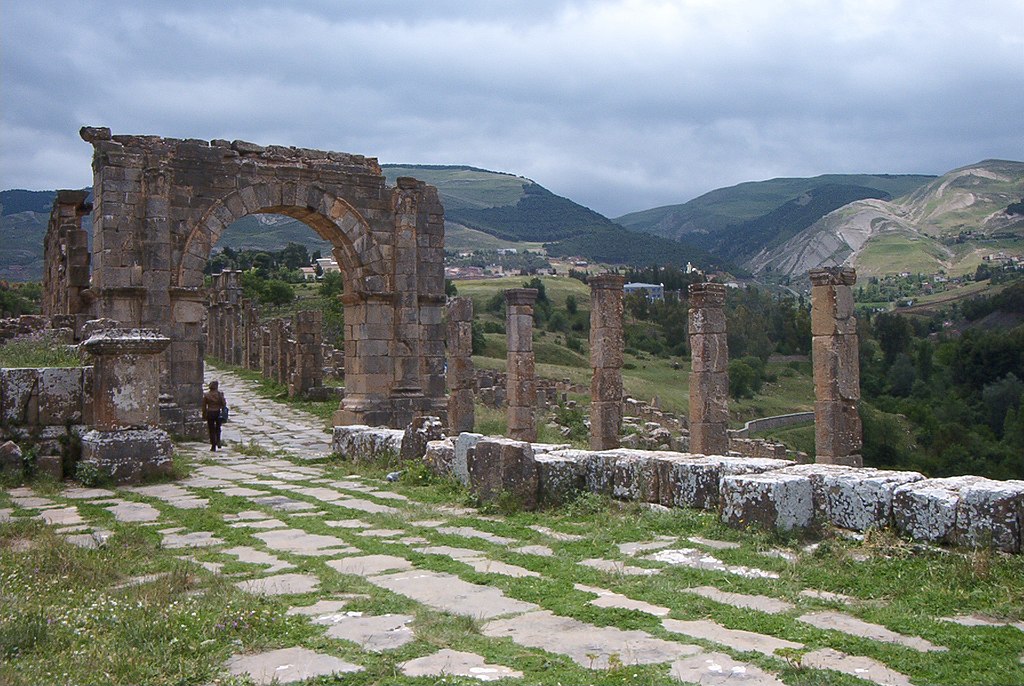
Visitors may observe signs indicating a hotel as they enter Cuicul from the north on Cardo Maximus. Phalli, on the other hand, were a frequent sign used to ward off bad luck and bestow benefits on the inhabitants of ordinary Roman households. Between the Old Forum and Cardo Maximus, there were baths where ancient travellers might relax.
Top Attraction to see at Djemila Village
The Baptistry, the Caracalla Gate, the Market, the temple of Septimius Severus, and the Theatre were among the structures that were geographically documented. Let us know more about them –
Roman Ruins of Djemila
The Djémila site houses remains of the ancient town of Cuicul, which was renowned as one of the most attractive Roman remains in the world. These are famous for their Ruins, ancient roman architecture and history.
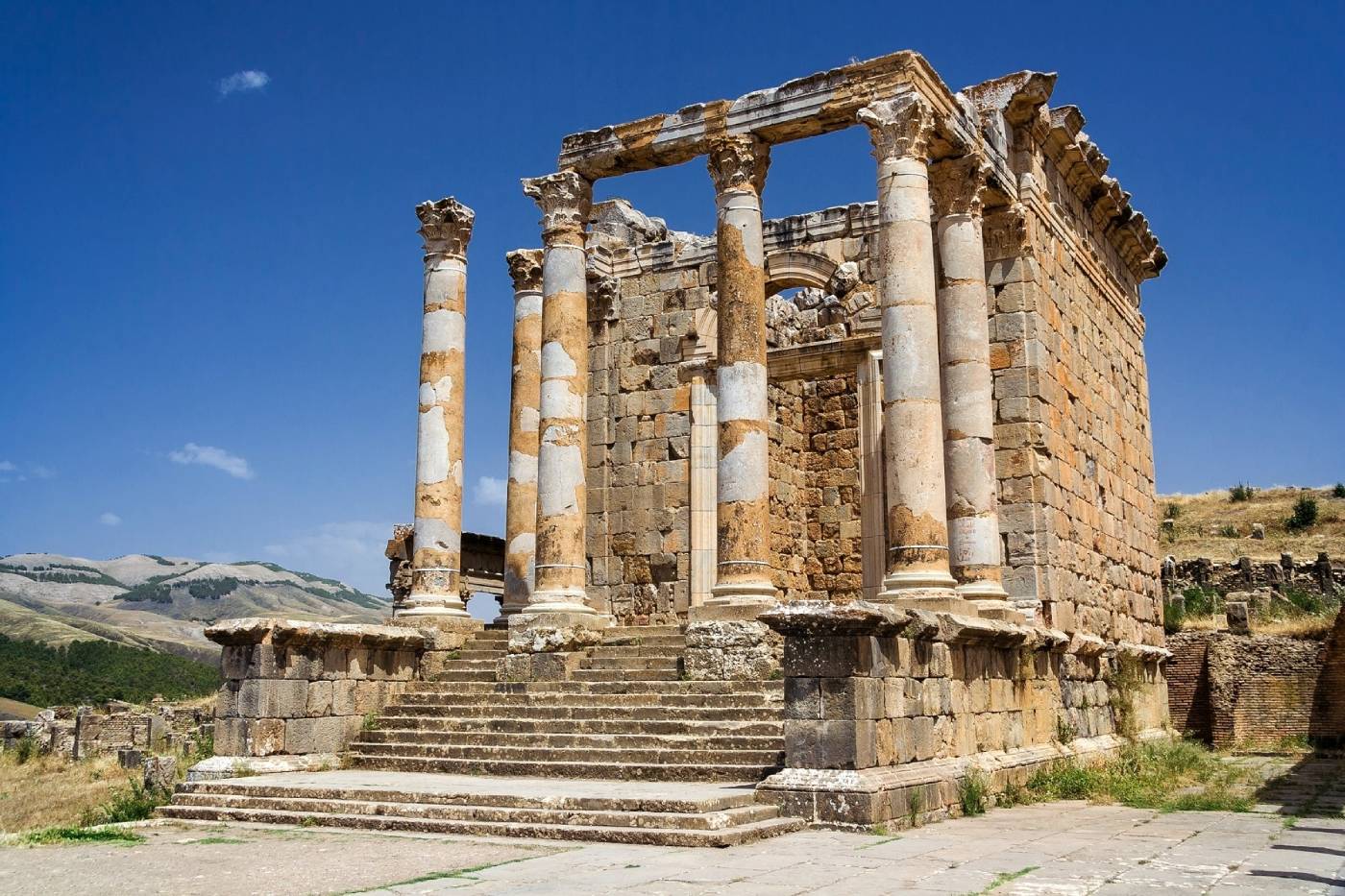
This roman structure of Djemila resembles some of the ancient structures from Athens, Greece.
Arch of Caracalla
The Arch of Caracalla is a triumphal arch built in the early third century by the Romans. The single-span arch was erected on the route going to Sitifis. It served as the gateway to the city’s Severan forum. In 216 the Ark was built in honour of Caracalla the Emperor, Julie Domna his mother, Septimius Severus, his late father.
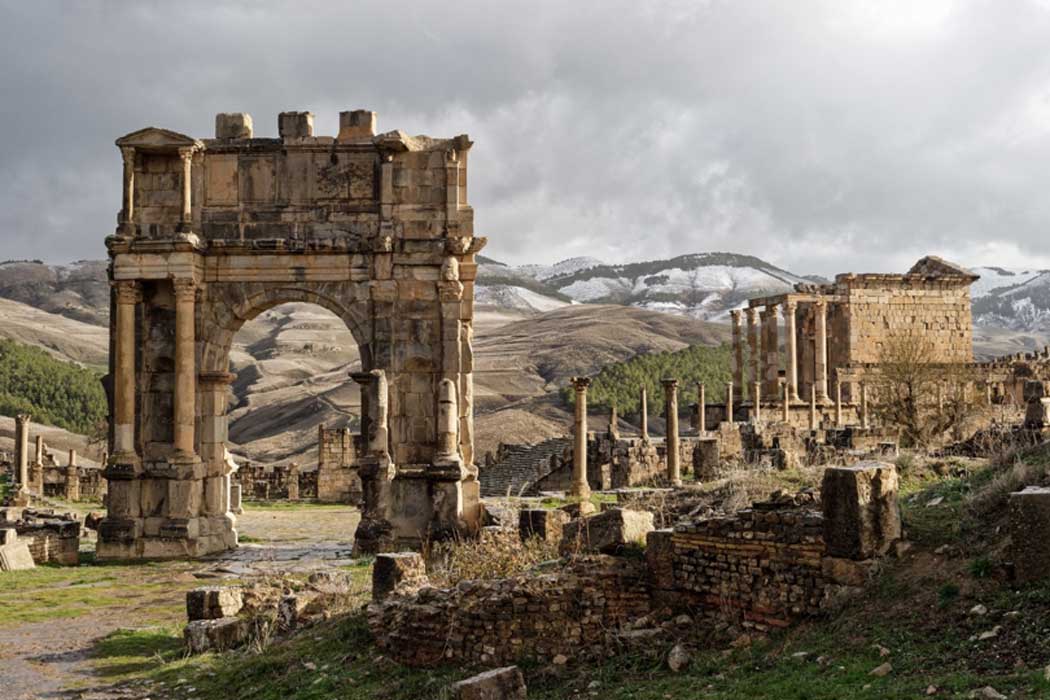
During a trip in 1839, Prince Ferdinand Philippe, Duke of Orléans observed the arch and decided to have it transferred to Paris. The project, which was almost ready to be completed when he died in 1842, was abandoned after his death. Since 1982, the arch, together with the remainder of the Djémila archaeological complex, has been on the UNESCO list of World Heritage Sites.
Roman theatre
Djémila’s Roman theatre, which could seat 3,000 people, was built in 161 AD and located on the eastern ravine’s slopes. The three entrances via which the performers entered are still visible.
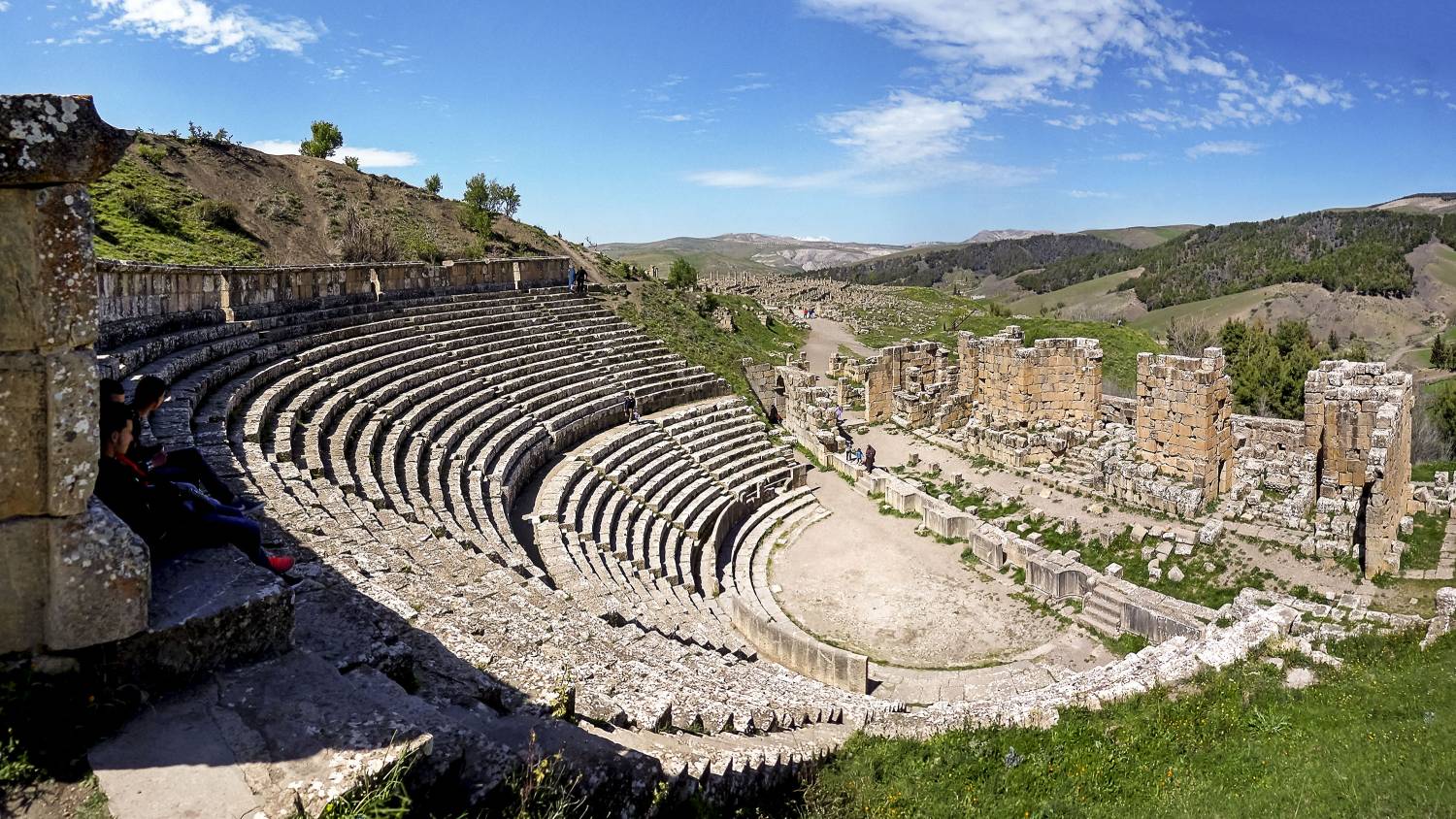
The forums also functioned as markets in smaller Roman towns, but Cuical had a specific market for food, which is still evident from Cardo Maximus. Legends say that the forum was used for religious and political activity in that century.
Other Highlights
Djemila Museum
Furthermore, the Djemila museum is located in the heart of the ancient city, making it an ideal location for visitors. You can learn more about the history of this Roman Village in this ancient museum. The Septimius Severus Temple is also a great site to see the ancient ruins of Romans.
Baptistry
One of the earliest Christian constructions in North Africa is the circular domed structure of the Baptistery. The thermal spa building, a small basement and two open courtyards are attached to Djemila. All of these spaces were probably configured for previous or additional baptismal rites.
How to Get There
Getting a private driver from Constantine is the most convenient way for travellers to visit Djémila. From Constantine to Djémila and then return will cost you around roughly 50 euros. The trip takes around two hours one way.
Taking public transportation to Djemila for a day excursion should be simple. You must travel to Setif or El Eulma via bus or shared cab and then rent a taxi from there.
Hotels Near the Site
If you seriously want to stay near this world heritage site, then there are few hotels in Setif and other nearby towns. The popular ones which are good in rating and can provide moderate amenities are
- Park Mark Hotel – Range Starts From
- El Hidhab
- El Rabie
- Hotel El Bazz
For an informative purpose, you can visit this UNESCO World Heritage Site and learn more about Roman ruins in Algeria.
Also Read: Jesuit Block And Estancias of Cordoba – A Remote Heritage Site

